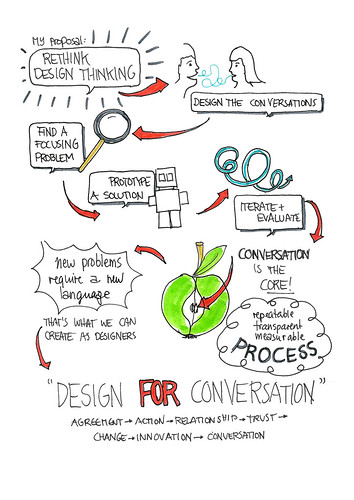The recent #beyondlaptops mini-conference at Yokohama International School was #beyondexpectations. I learned so much, yet still have so much to learn.
 My first share is the session “How Can We Solve Our Own Challenges”, an introduction to Design Thinking based on the work from the Institute of Design at Stanford. This session was excellently facilitated by Heather Dowd and Patrick Green (THE #knockemdead tech coaching team from SAS). I love hands-on workshops where the participants are fully engaged and this was one of those. Our challenge was to design something useful and meaningful for our partner in less than 60 minutes! Here’s an outline of the stages of the challenge that we covered and some commentary my additional research, mostly gleaned from the d.school’s Virtual Crash Course resource page:
My first share is the session “How Can We Solve Our Own Challenges”, an introduction to Design Thinking based on the work from the Institute of Design at Stanford. This session was excellently facilitated by Heather Dowd and Patrick Green (THE #knockemdead tech coaching team from SAS). I love hands-on workshops where the participants are fully engaged and this was one of those. Our challenge was to design something useful and meaningful for our partner in less than 60 minutes! Here’s an outline of the stages of the challenge that we covered and some commentary my additional research, mostly gleaned from the d.school’s Virtual Crash Course resource page:
EMPATHIZE: We started off with interviewing our partner (4 mins each). It was important to gain empathy so so then dug deeper for stories, feelings and emotions. We needed to ask ‘why?’ (another 4 minutes each).
DEFINE: In three minutes, we needed to reframe the problem. Firstly by capturing our findings into ‘needs’ and a few ‘insights’ that we found of interest that we may use to leverage when creating solutions (in 3 mins). Then we moved onto defining the problem in a statement that is ‘juicy and actionable’: {name} needs a way to {user’s need}. Unexpectedly in his/her world, {insight}
IDEATE: Step one was to ‘sketch to ideate’ which meant generating, not evaluating, a number of radical ways to meet our user’s needs. This meant going for volume in a few minutes. Step two was to share our solutions and capture the feedback from our partner. We needed to listen to our partner and resist the urge to defend our ideas. The point was not to seek validation but to use this as an opportunity to remember that this was about building empathy (about 4 minutes each).
PROTOTYPE: Taking this valuable feedback, we incorporated what we have learned about our user and some of our suggested solutions, looking for areas where we hit ‘pay dirt’ and also where some of our ideas ’tanked’. We needed to take the understanding and pull it into one single solution (3 mins). In a longer sessions, to build a prototype (in 6 or so minutes) we would have created a 3D model using whatever resources available such as lego, tape, paper, card, glue and other small items.
- How did engaging & working feel like with a real person?
- How did we feel about testing ideas with a real person?
- How was the pace – the iterative, quick process?
- What would we do next if we had to do it all over again?
- What stages would we revisit?
- How did (would) we feel about giving our ‘client’ unfinished solutions (prototypes)?
- What did we learn from listening carefully to our ‘client’?
“Innovation is a team sport”. George Kembel, cofounder and executive director of d.school
How does this apply to me & my students?
I will certainly use this process with my IBDP ITGS students for their Internal Assessment which is a real-life solution to a real-life problem with a real-life client. This process closely mirrors the Design Cycle that we use in MYP Design and as a basis for the MYP Personal Project and therefore Rachella and I are planning to facilitate this challenge-based workshop with our colleagues to generate discussions on how we can use this process with our students. More on that soon – I hope!

Be First to Comment